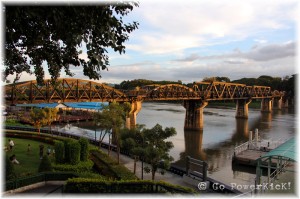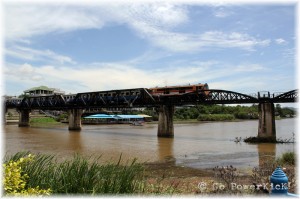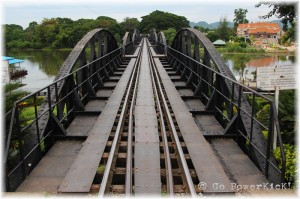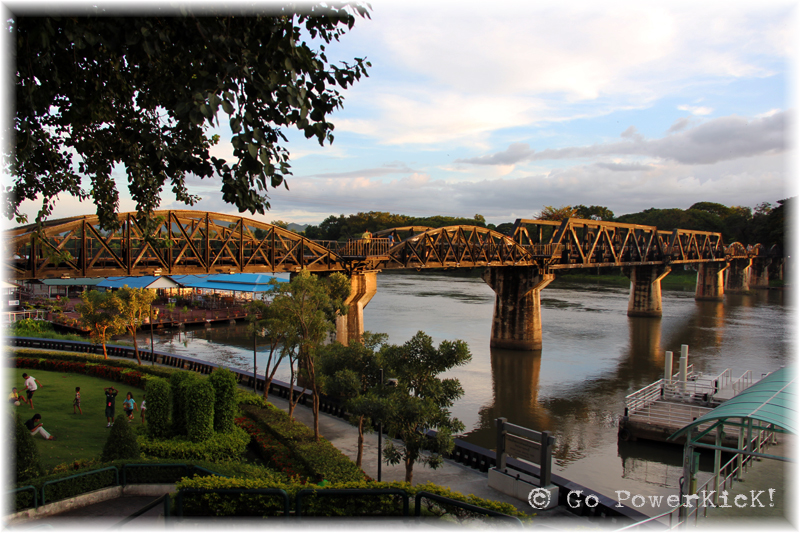By 1941 Japan was 4 years into their invasion of Asia. Attacks on British and American bases in  Pearl Harbor and Singapore officially entered them into the ‘Great Pacific War,’ World War II. In response to the Japanese offensive, British, Australian and American forces stuck back. Attempting to cut off supply routes, the Strait of Malacca in Singapore was blocked by allied aircraft and submarines. With supply lines severely disrupted the Japanese searched for a new means to resupply their army.
Pearl Harbor and Singapore officially entered them into the ‘Great Pacific War,’ World War II. In response to the Japanese offensive, British, Australian and American forces stuck back. Attempting to cut off supply routes, the Strait of Malacca in Singapore was blocked by allied aircraft and submarines. With supply lines severely disrupted the Japanese searched for a new means to resupply their army.
With a slave labor force of over 60,000 Allied POW’s, as well as thousands of forced Asian laborers, the Japanese looked to build a railway connecting Burma and Thailand to continue to supply their army while avoiding the dangerous sea voyage. The 415 km Burma-Thailand railway would connect Thanbyuzayat Station on the Burmese side of the border with Ban Pong station in Western Thailand. A POW sent to work at a camp in Thailand did not have an easy journey. Most endured a 5 day train journey from Singapore crammed into small rail cars.
Upon arrival in Ban Pong they were forced to walk to individual camp sites along the railway,  sometimes at a distance of 50 km or more. Everything at the campsites was completely constructed by the prisoners. They built their own shelter, hospitals, bathrooms and cook houses. Difficult to maintain, thousands died of diseases from poor sanitation, malaria and hunger. In addition, forced around the clock work and the brutality of the guards also claimed the lives of many. As a result of the overwhelming number of causalities the railway was renamed ‘The Death Railway.’
sometimes at a distance of 50 km or more. Everything at the campsites was completely constructed by the prisoners. They built their own shelter, hospitals, bathrooms and cook houses. Difficult to maintain, thousands died of diseases from poor sanitation, malaria and hunger. In addition, forced around the clock work and the brutality of the guards also claimed the lives of many. As a result of the overwhelming number of causalities the railway was renamed ‘The Death Railway.’
The Bride over the River Kwai was built from 1942 to 1943 by the hands of the POW’s, and is one of 688 bridges built along the railway. It’s located about 5km from the center of Kanchanaburi, and close to the Wampo Campsite. Initially there were two bridges built at the river crossing. The first was a wooden bridge constructed in early 1943. The second, a stronger version, came a few months later when  the Japanese brought in curved steel bridge spans from Java, Indonesia. The river was seen as a strategic point for the Japanese to bring supplies into the region. To prevent further transportation allied bombings destroyed sections of the bridge in 1945. What stands today is a combination of original and restored/rebuilt sections of the bridge.
the Japanese brought in curved steel bridge spans from Java, Indonesia. The river was seen as a strategic point for the Japanese to bring supplies into the region. To prevent further transportation allied bombings destroyed sections of the bridge in 1945. What stands today is a combination of original and restored/rebuilt sections of the bridge.
Today, the bridge has become a tourist attraction surrounded by a museum, shops, floating restaurants and street vendors. Getting to Kanchanaburi is very easy. Trains depart daily from the Bangkok Noi station at 7:45am and 1:55pm. For just 120 baht ($4) the trip is a nice and scenic 3 hour journey through the country. If you plan to go on a weekend, there is a special train for tourists (#909) that leaves the main Hua Lampong station in Bangkok at 6:30am and arrives at the bridge around 9:35am. The train stops for roughly 10-15 minutes to allow visitors to walk across the tracks and take  photos from the different viewpoints. If you look down in some places you can see parts of the original wooden planks used in construction; and on the Nom Tok side if you look closely at the metal railings you can see indentations from where bullets hit and ricocheted off the bridge during the bombings.
photos from the different viewpoints. If you look down in some places you can see parts of the original wooden planks used in construction; and on the Nom Tok side if you look closely at the metal railings you can see indentations from where bullets hit and ricocheted off the bridge during the bombings.
Anyone who enjoys history should definitely visit. Seeing the bridge and having the chance to walk this piece of history is an awesome experience. A one day trip is perfect to see the Bridge, War Cemetery and Death Railway Museum. However, if you have more time, 2 or 3 days is perfect to also see some of the other great attractions Kanchanaburi has to offer!
Comments
More Good Reads!

Helicopter Over Oahu
May 10, 2014
May 2014 PowerKicK Of The Month
May 01, 2014
Bike The Golden Gate Bridge
April 29, 2014
Hua Hin Hills Vineyard
April 19, 2014
Songkran in Nan
April 10, 2014
April 2014 PowerKicK Of The Month
April 01, 2014
Mae Hong Son Motorcycle Loop: Mae Sot to Mae Hong Son
March 28, 2014
Becoming A Buddhist Monk In Thailand
March 20, 2014
How To Spend A Day In Ayutthaya
March 07, 2014
























